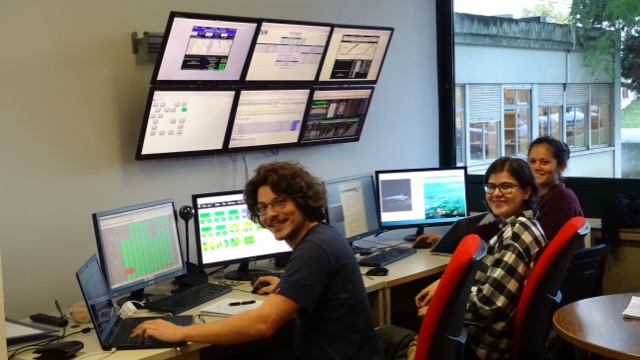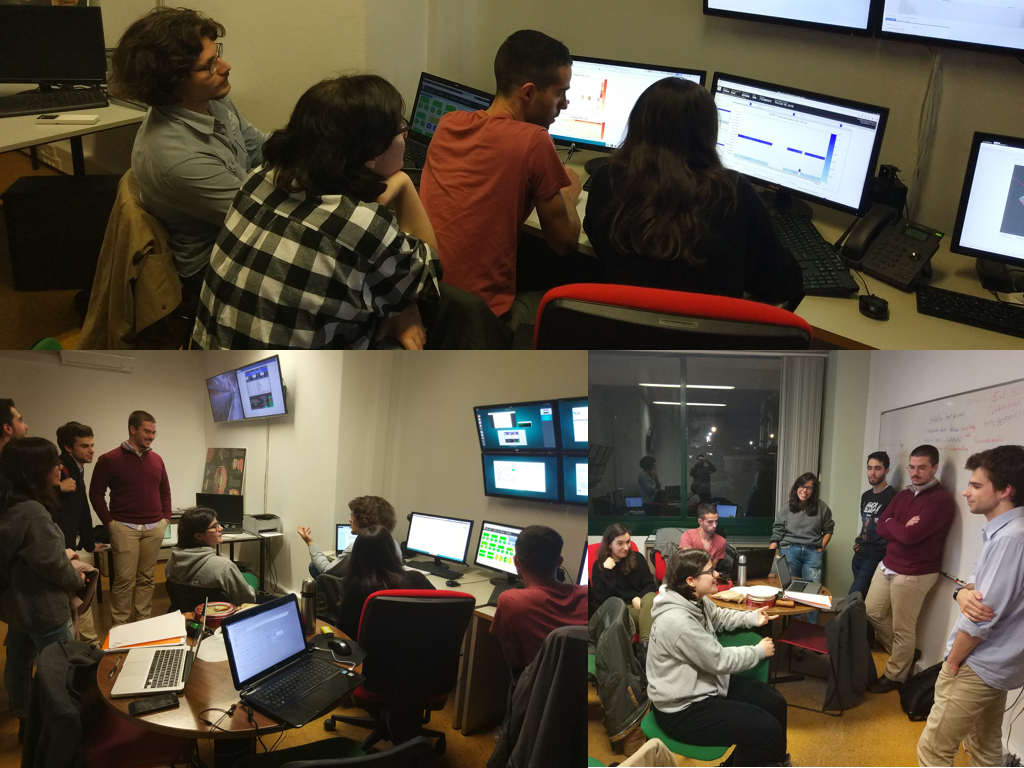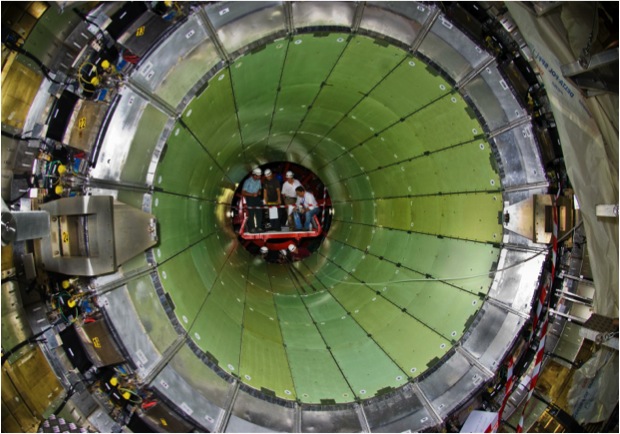The CMS LHC experiment at the LIP@IST room
"Members of CMS are in the LIP@IST control room taking care of a part of the detector. Pass by from the 19 to the 25 November to see how it all works and learn about CMS, the LHC and CERN!"

What?
CMS LHC data taking shifht
When?
19-25/11 (special event 20/11, 15:00-18:00)
Where?
LIP room at IST (entrace of Mathematics/Physcs building)
Why now?
next opportunity in 2 years from now!

This November, members of the CMS experiment are in the LIP@IST control room taking care of a part of the detector, in the last data taking periond of the LHC run 2.
The center of attention is the ECAL (Electromagnetic Calorimeter), the CMS sub-detector dedicated to electrons and photons. The LIP group is responsible for the ECAL data acquisition system. The researchers perform real-time monitoring of the different components and parameters of the detector, as well as their calibration. They are also responsible for certifying the quality of the data collected, based on the detailed status and performance of ECAL.
The data that have been validated then becomes available for the CMS Collaboration to perform its physics analysis. Between leaving the detector and arriving to the hands of the physicists, data are processed in a computing grid, which has a node located at LIP. Our researchers are also involved in monitoring the insfrastructure and services of the CMS distributed computing system.
These shifts count on the participation of PhD students in the CMS-LIP group, who went thorough a rather extensive training in order to become familiar with the detector and the procedures to be performed. The group will also count on the participation of students who worked in the CMS-LIP group during the LIP Summer Internship Program.
The LHC is colliding lead ions at a record energy of about 5 TeV (5,1012 electron volts), and the CMS experiment expects to accumulate a large amount of data over the next few weeks. For everything to go well, the detector and the quality of the data must be controlled day and night. This is the final period of data taking before the LHC stops for two years, improvements in the accelerator and experiments.
The ECAL shifts take place on 5-11 and 19-25 November, in the IST room from 8am to 6pm. Computer shifts take place on days 19-22. On Tuesday 20, from 3:00 p.m. to 6:00 p.m., a demonstration of data collection activity will be carried out, with a direct link to CERN.
This is the invitation to all who are interested: come by during this week to see how it all works and learn a little more about CMS, the LHC, and CERN!

